V8Nam - the drive of 2013
Once upon a time, in a pub called the Seymour Arms, we were passing the evening by thinking up with ever more outlandish ideas for roadtrips. As the evening progressed, the practicality of the suggestions gradually spiraled upwards from the realistic to the ridiculous, until by 11pm, only the daftest ideas were carrying any weight. And then, in a single word, it was mooted.
Get a car with a V8 engine, and drive it to Vietnam.
The idea was of such genius that it refused to go away, and hence on April Fool’s Day 2013 I found myself setting course for the far side of the world, at the helm of a rather conspicuous Chevrolet Corvette, propelled by a mighty 5.7 V8 which sounded just a bit like a warzone.
In the first two weeks of the trip, the Corvette and its travelling companion – which logic dictated simply had to be a 1978 Rolls Royce – covered 2,800 miles from England to the Ukraine, via France, Switzerland, Germany, Austria, Hungary, Romania and Moldova. As we travelled east, the familiarity of Western Europe slowly fell away, the experience gradually becoming more foreign with every new country. In Romania we found ourselves roaring past gypsy caravans on the twisty, snow-lined roads of Transylvania. At the Moldovan border we encountered our first proper red tape, with the Corvette being denied entry until we’d jumped through a variety of insurance and customs-related hoops, while our entry to the Ukraine saw the potholes-per-mile count climb to frankly stratospheric levels, resulting in the low-slung Corvette attempting to avoid a pounding by swerving its way along the shattered road to Kiev.
Despite initial impressions, the Ukraine turned out to be a rather pleasant place in which to travel, the Corvette and Rolls duo clocking up nearly 1,000 miles on the country’s perma-potholed tarmac. On our way east towards the Russian border we dropped by such fascinating places as a cold war missile silo, the Chernobyl museum and the erie caverns of a disused salt mine – not the usual experiences of a Euro-roadtrip! We also found that even on the main roads, petrol stations are pretty thin on the ground in rural Ukraine, and nearly fell foul of the ‘Vette’s appetite for unleaded on several occasions. However we always managed to limp to somewhere with gas to sell, and so, after a week in the Ukraine, we made it to the Russian border.
We rolled into Russia late at night, and were immediately greeted by a group of youths in a Lada who, on seeing the Corvette, felt obliged to entertain us with several minutes of tyre-smoking doughnuts, before wheelspinning away into the night.
Purely on initial impressions, we decided we quite liked this country.
Daylight revealed Russia’s Volgograd Oblast region to be a gloriously simple place – a big-sky country of sweeping grasslands, chill blue skies and a long, straight strip of tarmac slicing through the landscape to the city of Volgograd; better known for the images of carnage conjured up by its previous name – Stalingrad. The city now bears little trace of its apocalyptic history, but one reminder is omnipresent – the 87m tall statue named ‘The Motherland Calls’, which poignantly watches over the city.
From Volgograd, a 300 mile burble across took us to the border with Kazakhstan, the landscape gradually turning dustier as Eastern Europe’s sweeping grasslands gave way to the empty steppe of Central Asia. As we drove, Russia continued to give the Corvette the thumbs up, bright red American sports cars being a rather rare sight – and sound – in this part of the world.
Everything changed a little when we entered Kazakhstan. The potholes instantly multiplied, becoming worse even than the Ukraine. The landscape became even more vast and empty, the camel-dotted steppe which stretched ahead of us covering an area the size of Western Europe. The people became less shy and crowded around whenever we stopped, shaking our hands and questioning us, while the police suddenly became much more interested in our vehicles, and more pertinently, in our wallets.
The 200 miles from the Russian border to the first town contained more potholes than the rest of the trip put together up to that point, and for hours we slalomed along the deserted, broken tarmac, avoiding the impacts as best we could. After a night in Atyrau we pushed on, the road suddenly deteriorating to a point where we were forced to crawl along over the undulating, broken surface, the Corvette’s lack of suspension travel meaning it was often on 3 wheels as it tiptoed through the dips and troughs, the forth wheel sometimes floating up to 2 feet in the air.
After about 5 miles of these terrible roads, the Rolls Royce banged its exhaust, which promptly snapped, turning the refined vehicle into something which rivalled the Corvette for aural uncouthness. With no towns on the map for the next 100 miles, we beat a retreat to the last settlement to get it patched up, where we discovered the manifold had cracked, requiring a very tricky piece of welding to fix, but after a few hours of trying the local welding chap managed to tack-weld the two pieces of manifold back together, a repair that lasted all of the next 50 miles.
While the Rolls was being welded, we took tea with some locals, who advised us to loop around the bad road by heading 300 miles north to the town of Oral, then carrying on east to rejoin the more direct, through terrible road. So that’s exactly what we did, the largest detour of my life carrying us across the steppe on reasonable tarmac, towards the road to the Aral Sea, with the Kazakh police force hassling us all the way.
We’d driven the road from Oral to Aralsk before, in 2006 when we completed the Mongol Rally at the wheel of a pair of dainty Minis, and the improvements in this section in the intervening 7 years were all too clear. Where once the road surface was littered with gargantuan potholes, we were now able to sweep along new tarmac; where once there was a hundred miles between petrol stations, there was now a rash of newly built services. The most dramatic transformation came on the 200 miles leading to the Aral Sea, which had previously been a nightmare of disintegrating tarmac, slowly being reclaimed by the steppe – hence we were most surprised when we found that a brand new road had been built, enabling us to cover the distance in about 3 hours, compared to the 2 days it took us to drive the road on the Mongol Rally.
The town of Aralsk was as we’d remembered it, a dusty, broken place which was once a bustling fishing port on the Aral Sea, before ill-advised Soviet irrigation schemes meant the ocean retreated and left its harbours dry, flooded only by a sea of sand.
As we continued south towards Kyrgyzstan, the roadworks were very much underway, so for hundreds of miles we drove on gravel tracks in the steppe, parallel to the new highway, popping into the towns of Kazylorda, Turkistan and Shymkent as we got closer to the border. Soon, the mountains started to rise in the south, signalling our entry into Kyrgyzstan, a beautiful land of soaring mountains, nomadic herders and incompetent governance. After a few days in the hills we dropped out of the rarified air, headed back into Kazakhstan and continued making our noisy way east, towards the next international boundary, and the start of the next stage of the adventure.
The Chinese border grew in our windscreens as we rolled across no-man’s-land. Beneath the nation’s blood-red flag, four immaculately turned out young soldiers stood unflinchingly to attention, as if they’d not moved for days. As we awaited our turn to enter the border post we watched the trucks in front of us roll past the unblinking guards, who maintained their rigid stance as if their life depended on it, in a display of discipline as impressive as any London beefeater.
Then it was out turn to pass.
The motionless guards began to twitch as the V8 rumble reached their ears, desperately trying not to turn their heads. However it was all too much, and the steel order and discipline of the Korgas border post rapidly fell apart as we passed their field of vision, with drillsquare uniformity quickly being replaced by dropping jaws, blinking eyes and an aura of confusion. We were well past the guards before they finally gave up any pretence of order and broke ranks, running after us to find out who the hell we were.
And so began our time at the Chinese border.
China is rather an awkward place to take a car into, and preparations for this leg of the journey had begun a full five months before, when we’d put together a full itinerary of our planned route and timings for the perusal of the government, along with details of the cars and passengers. Liaising between us and the Chinese government on these matters was an intermediary company which specialises in negotiating the complex red tape which bars foreign-registered cars from China, and who also supplied our guide for the duration of our stay in the country – a legal requirement for self drive visits.
Meeting us at the border, our guide – who hailed from Chengdu – set about the complex task of getting the cars into China, a thankless task by anyone’s standards, and one which ended up taking 4 days, such was the weight of bureaucracy involved. However eventually, the cars had passed their Chinese MOTs, we had Chinese driving licenses and number plates, and a dossier about an inch thick had been assembled on each of our vehicles and submitted to the authorities, meaning we were free to hit the road.
And so we got stuck into the 3,500 miles from Kazakhstan to the Laos border by hitting the road to Urumqi, capital of China’s north westernmost province, Xinjiang. Our initial impressions were that the whole country was still under construction, and for days our view through the windscreen was seldom without the skeletal outline of a tower block, railway or power station being built, as the government strives to develop the country’s poor West, harvest its abundant raw materials and bind the nation together through infrastructure, migration and development.
For day after day we crossed unattractive empty deserts dotted with building sites, the temperature soaring higher each day. Every time we parked a crowd 20-strong formed around our vehicles, while on the chaotic highways every third car we passed had a camera phone blinking at us. In the town of Urumqi we hit slow traffic which caused the Corvette’s first breakdown of the trip, as the cooling fan died and the temperature gauge shot into the red; however a temporary bodge got us moving again with the fan wired directly off the alternator. Meanwhile the Rolls plodded on in a businesslike fashion, with only the noise from its broken exhaust denting its refined air.
Nearly a thousand miles into China, the temperature passed 40 degrees as we dropped down to the desert town of Hami, known as China’s Death Valley thanks to its location 80m below sea level. Fortunately, the cars took the temperature in their stride this time, which was just as well as we were locked into our pre-agreed itinerary and couldn’t afford a delay – both in terms of time, and the fact the cars were subject to a £20,000 customs deposit which we wouldn’t see again until the cars left China. Leaving the cars in-country was not an option.
After Hami, we swung down to the Silk Road oasis town of Dunhuang, which plays host to some rather cool sand dunes, as well as the Mogao caves, a UNESCO heritage site more famously known as the ‘Caves of a Thousand Buddhas’. From the 4th century AD, this spectacular series of caves was cut into a sandstone cliff, each one covered floor-to-ceiling with Buddhist art. To the current day, over 700 caves have been carved, ranging from tiny grottoes to huge caverns containing statues up to 26m high. Our two hour tour took in ten of the caves, and resulted in not only a heady feeling of appreciation for the intricacy achieved by the artists, but also a definite sensation of Buddhism overload.
Next on our itinerary was ‘the last gate under heaven’ – the Great Wall fort at Jiuquan. Once, this fort represented the boundary between a civilised world of Chinese culture within the wall, and the bleak deserts inhabited by barbarians outside. This being China, even the historic landmarks are building sites, and hence a lot of the fort was covered in scaffolding, but it still wasn’t difficult to gain an appreciation of both its substantial construction and its strategic location in a narrow pass between two mountain ranges.
From Jiuquan, we headed southeast, into the mountains which rise up to form the Tibetan plateau; a land of yaks and monasteries, prayer flags and battlements. It came as a great relief to finally reach the cooler uplands after so long spent crossing the bleak, development-scarred deserts which dominate China’s northwest regions. The landscape retained its bareness as we climbed, but acquired a drama which increased with every metre of altitude we gained. Craggy, rough set mountains shadowed the smooth tarmac, their slopes covered with a dusting of grass which gave way to snow at their summits. As the road swerved its way to a highpoint of nearly 4km above sea level, the cars gained a definite lethargy, but predictably, the big V8s had plenty in reserve to cope with the altitude.
After overnighting on the 16th floor of a tower block in the fairly uninspiring regional capital of Xining, we carried on through the mountains, passing near the source of the Yellow River, before arriving at Xiahe, home of the Labrang Tibetan monastery. This fine collection of buildings has a patchy recent history, having been pretty much destroyed during the cultural revolution of the 1960s, before being rebuilt in the late ‘70s, then damaged by a fire in the ‘80s, then repaired once again. Today, it is one of the most revered sites of Tibetan Buddhism, and is home to around 600 monks – all of whom seemed rather excited by the Corvette.
After spending a few days exploring Xiahe, we headed south through the mountains towards Chengdu, taking in the monasteries at Langmusi and the walled city of Songpan as we went. After crossing the famous Aba plains – scene of the most celebrated leg of Mao’s great march 70 years before – and passing through lands devastated by the brutal earthquake of 2008, we began to descend out of the mountains into the flatter lands around Chengdu. This sent the temperature soaring once again, but fortunately the smooth highways allowed us to make easy progress with our windows-down aircon turned up to maximum. Our southward journey was broken up by visits to a selection of giants – namely the 71m high giant Buddha at Leshan and a giant panda sanctuary near Ya’an, where approximately 80 of the remaining 2,000 gentle giants pass the time by munching on bamboo for around 14 hours a day.
South of Kumming, and a relative stone’s throw from the Chinese border, The Rolls suffered its first proper breakdown in China. A stuck float in one of the carburettors resulted in fuel being pumped overboard through an overflow pipe whenever the engine was running. After a fair bit of head scratching (and a definite reluctance to remove the carb, given the customs deposit and our general incompetence with all things mechanical) we ran the engine without the fuel pump for a while, dropping the level in the float chamber to a point where a hefty blow could release the stuck mechanism, and thus allowing the Rolls to reach the border without haemorrhaging several hundred pounds of fuel in the process.
And so we were free to hit the road to Laos, and China celebrated with one last change of landscape, the rolling green hills of further north growing more verdant to the point where we could almost be in the jungles of SE Asia.
And following a surprisingly easy passage across the border and into Laos, we were.
After a month immersed in the almost obsessive pursuit of infrastructure and capital which is inescapable in modern China, northern Laos felt like it was frozen in time, destined to reside forever in the mid-20th century. To the sides of the road, the jungle bulged so densely as to appear impenetrable and often droned with unfamiliar noises from insects and animals, which made us less than enthusiastic about testing its impenetrability. The broken tarmac and gravel road surface undulated left and right through the unfamiliar greenery, finding a tortuously twisty path of least resistance through the domed hills and steep-sided valleys which make up the landscape of northern Laos. People were few, generally staring blankly at our unfamiliar steeds as we roared past their wooden shacks which huddled by the road, while a few more prestigious folk cruised around on mopeds, occasionally with the ultimate rural statue symbol – an AK47 machine gun or French-era flintlock rifle – draped casually across the handlebars.
After 2 days slaloming along the pitted roads of the north, we arrived at one of Laos’ most significant towns – Luang Prabang, a pleasant place on the Mekong River which once served as the nation’s administrative capital, and now serves as its tourist capital. Luang Prabang marked the end of the road for the Rolls Royce, being sold to a hotel to begin a new life as an upmarket airport taxi. And so we waved goodbye to the Rolls Royce, which had done so brilliantly during the 12,000-odd miles it had covered since leaving the UK.
And with V8Nam reduced to one car, I continued south along an incredible stretch of tarmac which swept left and right around limestone karst towers and river valleys, while rising and falling at the whim of the mountains which continued to dominate our Laos experience, before arriving at the next town of note – the idyllically located Mekong river town of ‘Vang Vieng’. The village’s name translates as ‘fishing village’ – though it seems the fish in this part of the Mekong had been replaced by gap-year tourists in varying states of inebriation, floating down the river in tyre inner tubes before packing the bars into the night. With 120 hotels and hostels in town, it’s pretty clear where the place is heading, but despite this, it’s still a pretty pleasant place to crack open a beer and watch the sun set over the Mekong.
From Vang Viang, we headed south, transiting Laos’ capital city of Vientiane to the friendship bridge, where we entered Thailand and made for Udon Thani, one of the major cities in northeast Thailand. Here we carried out a few crucial repairs on the long-suffering Corvette, including an oil change, a repair to the cooling fans, and most challengingly, new rear tyres – for some reason, 275 40ZR17 isn’t a very common size in pickup-dominated Thailand, and we certainly needed them.
Next stop on the itinerary was Siam Reap in Cambodia – a city groaning under the weight of tourists, and the restaurants, bars, hostels and souvenir shops which inevitably spring up whenever tourists flock somewhere in droves. It was inevitable that the place would experience an influx of visitors once Cambodia had cast off the horrors of its recent past, as just to the north lies one of the greatest sights this planet has to offer – the incomparable temples of Angkor. Between 800 and 1400AD, the Khmer Empire flourished, and its capital – Angkor – grew to become the greatest city on the planet at that time, a pre-industrial conurbation of about a million people. Most of this vast capital disappeared long ago, as virtually all the buildings within it were made from wood, thanks in part to the Kymer’s belief that only the gods had the right to reside in structures of stone; however what is left – the stone monuments to various Hindu and Buddhist gods – certainly does the Kymer Empire justice, and justifies Siam Reap’s position as one of the most popular destinations in SE Asia.
We left Siam Reap and headed east, completing the last few hundred miles to the Vietnamese border, and completing the’V8Nam’ dream in the process by chinking sunset mojitos in Saigon. Instead of driving in, we elected to celebrate our arrival in ‘Nam by buying motorbikes and riding the length of the country, because to really experience this nation of 20 million bikes, 2 wheels was the only way to go.
Following our Honda-mounted interlude, I carried on towards Singapore – still 2,000 miles away; the Corvette slotted into its role as a slightly gaudy addition to the South East Asian backpacking scene effortlessly after so long on the road. We took in the decaying streets of Phnom Penh and the sweeping beaches of Sihanokville before leaving Cambodia for Thailand, where the heady metropolis of Bangkok provided a welcome pitstop.
From Thailand’s capital, all roads led south, to the beaches and islands for which the nation is famous. So famous, in fact, that the stunning resorts of Krabi and Railiay felt like they were groaning under the weight of their visiting holidaymakers, a strange sensation after several months on the road in the wildernesses of Central Asia and Western China. A car lends more freedom than is experienced by the average backpacker, hence I was able to escape the bustle by beating a retreat to Hat Yao, a remote fishing village in southern Thailand which is home to about 200 friendly Muslim folk, a few cheery geckos and about half a million crabs, and the few days I spent there writing, bouldering on the beach and watching crabs play in the surf were among the most pleasant of the trip.
Next stop was Malaysia, where I spent a few days basking in the warm culinary glow of Penang, before pulling into Kuala Lumpur late one evening, over a third of a year after leaving the UK. This was one of the most memorable arrivals of the trip, sweeping out of the Cameron Highlands as the sunset, into a vast city lit up to the horizon, and punctuated by the soaring petronas towers, which grew larger in the Corvette’s windscreen until they were towering directly overhead, frames in the Corvette’s glass roof.
Kuala Lumpur represented the beginning of the end of the trip, for land was running out. A few hundred miles down the road lay Singapore, where this corner of Asia ends. And so the trip fittingly ended there too, 14,000 miles, 22 countries and 5 months after our unlikely cars had left England.
And all because of a conversation in the Seymour Arms, all those years ago!
Finally, a big thanks to everyone who helped to make this trip possible – Brummy, Grant Williamson, Kim Croft, Laura Reddin, Ian Lucas, Fred Wobus, Jon C, Navotour China and last but not least Dewerstone Lifestyle clothing






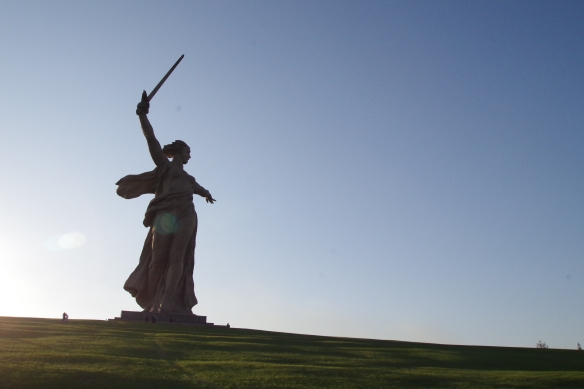


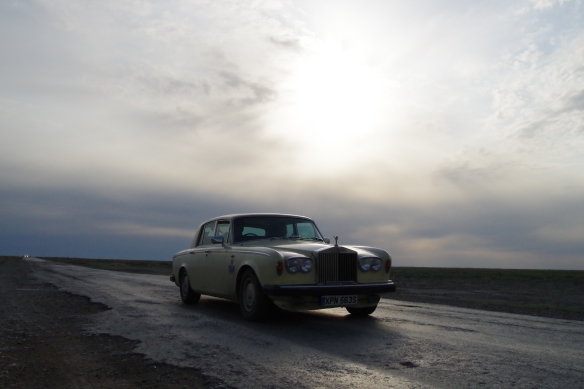
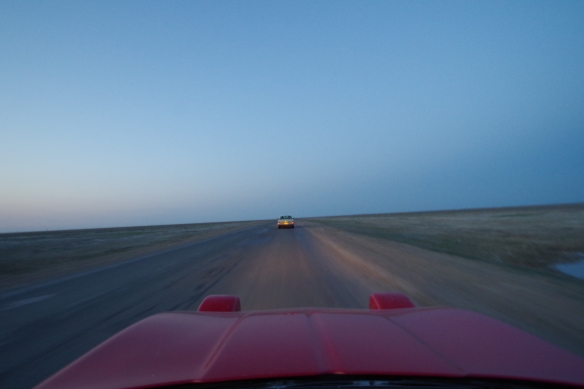





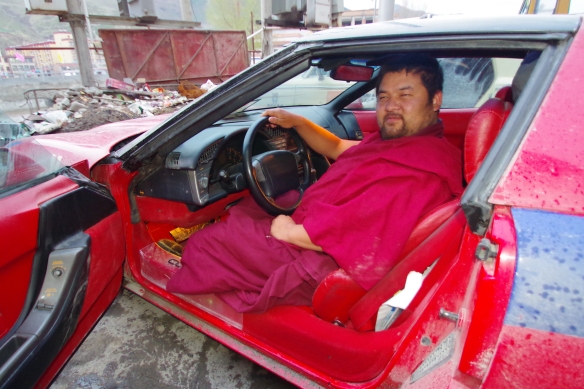


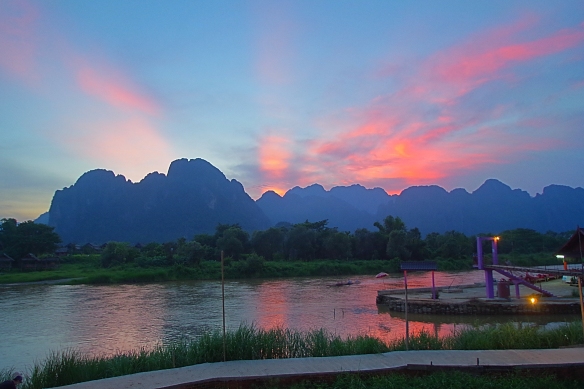



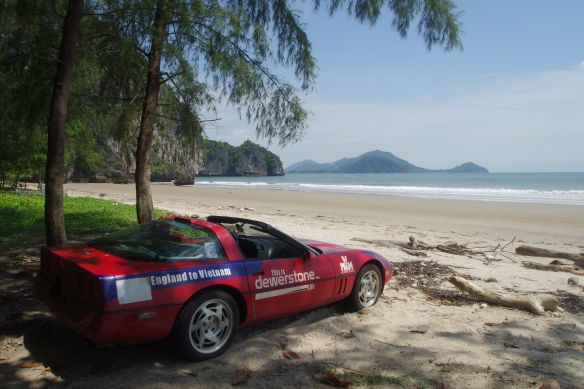
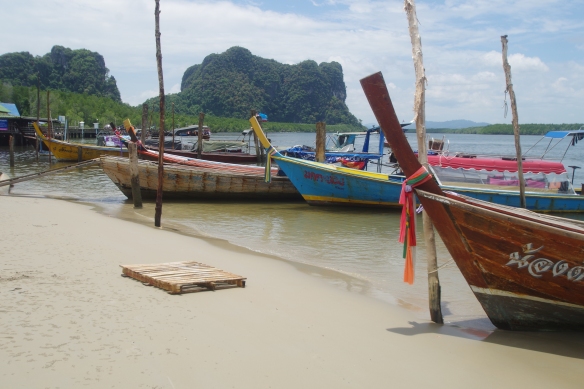



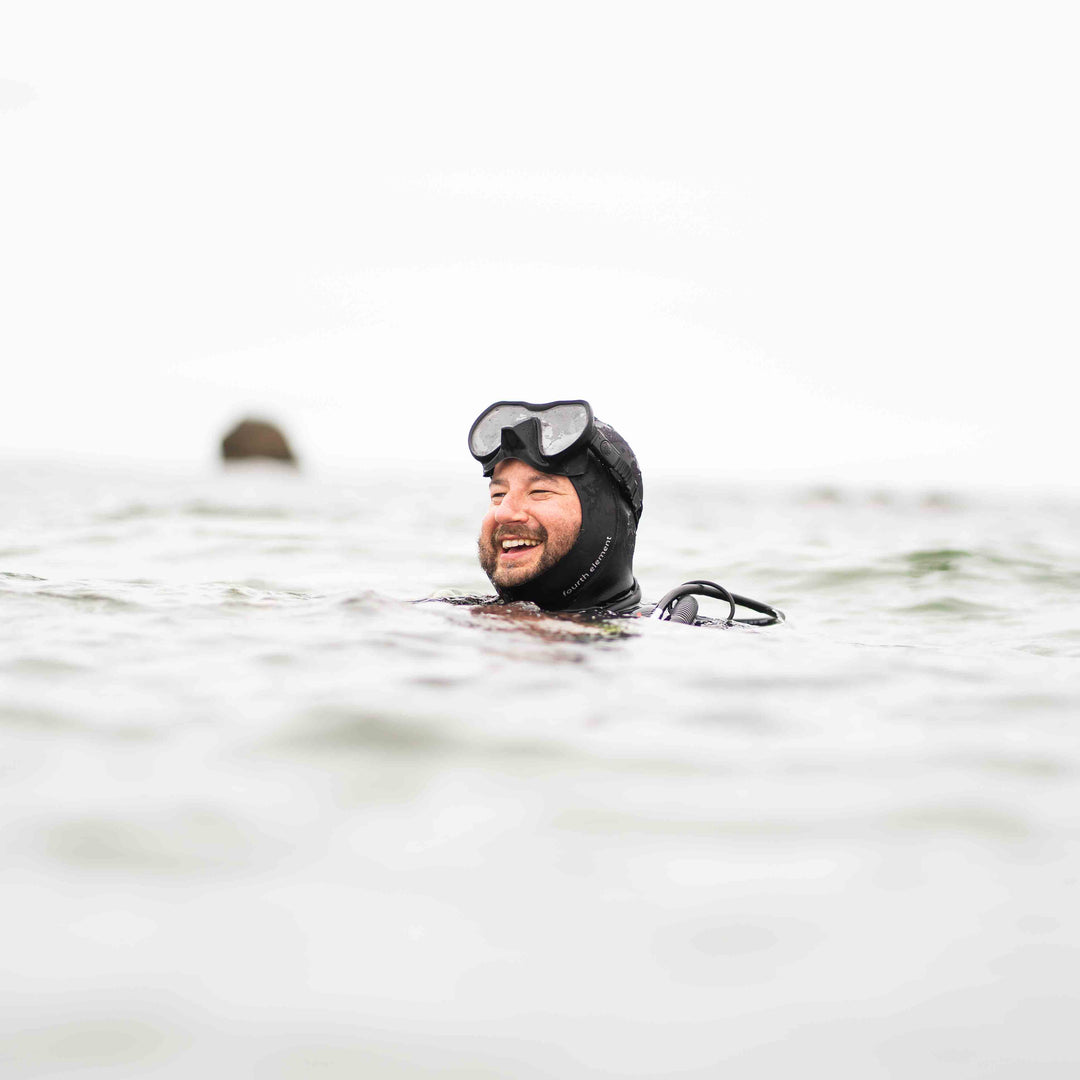

Leave a comment